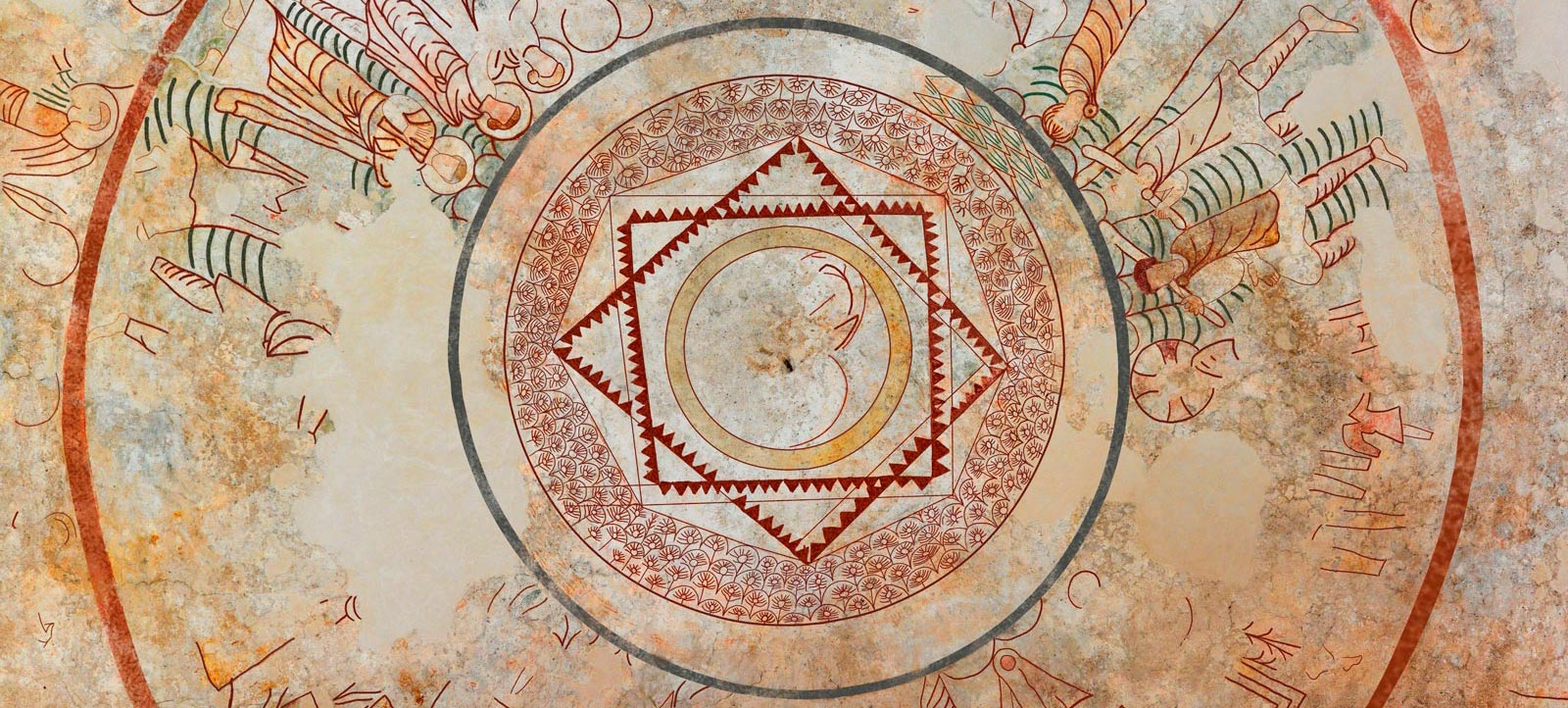

With regard to the paintings in St. Mary and St. Michael, the conclusions of the most recent technical reports produced by archaeologists, art historians, restorers and epigraphy experts suggest that the paintings and their architectural support are contemporaneous, and the paintings would therefore have been completed during the golden age of the Episcopal See of Egara, between the 6th and 7th centuries.
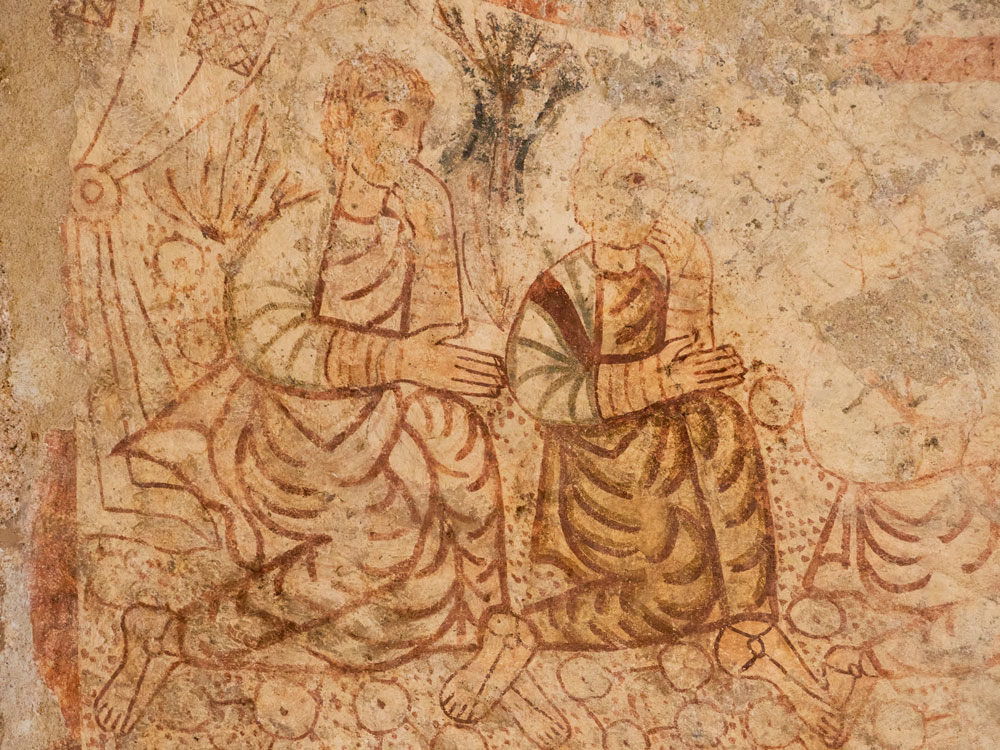
The pictorial decoration is located throughout the surface of the apse, which given its structure forms an almost complete dome. The decoration is organised into five concentric registers demarcated by 4 strips of maroon colour. The overhead motif comprises two superimposed squares forming an eight-pointed star, around which we find decorative motifs with peacock feathers and a great laurel wreath. Both subjects have Christian roots, being linked to the Triumph and Resurrection of Christ, and appear in mosaics and illuminated manuscripts of Late Antiquity, such as the mosaic of the rotunda of St George of Thessaloniki and the Dioscorides of Vienna, a manuscript produced in the 6th century (c. 515).
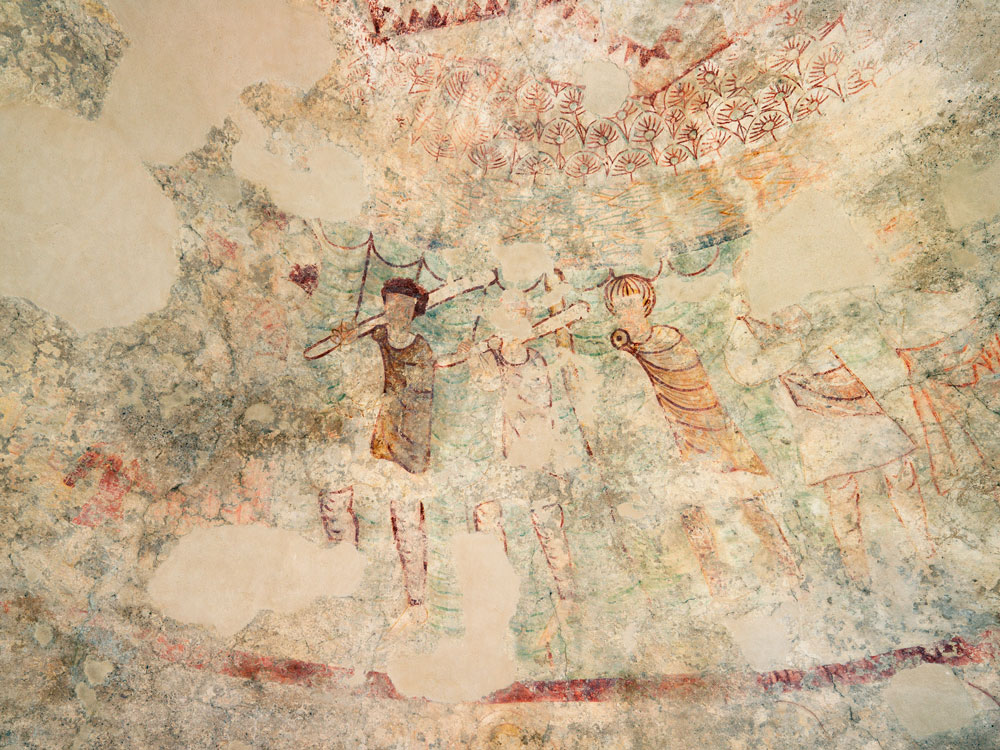
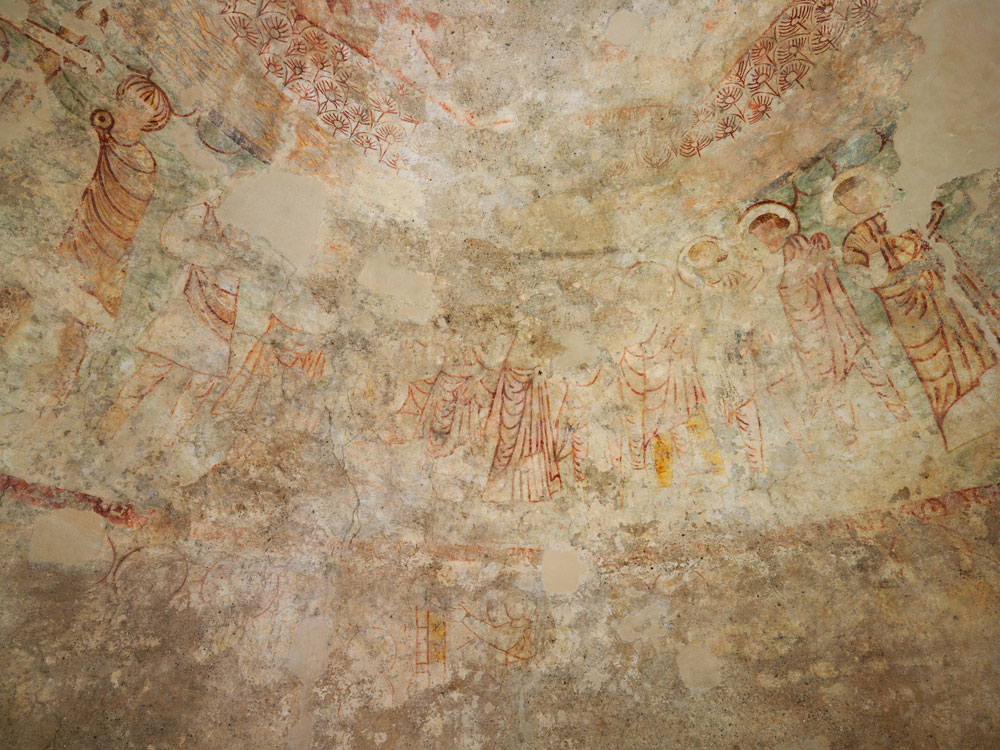
The paintings in St. Michael feature two registers of pictorial decoration. Above is the representation of a theophany, in other words the image of the enthroned Christ in Majesty, within a mandorla supported by angels. The nimbus of Christ reveals the inscription "Emmanuel", meaning "God with us", emphasising his dual human and divine nature. One may imagine that the title Emmanuel was used to counter heresies denying the dual nature of Christ, such as Arianism, which spread across the Iberian peninsula in the 6th century.
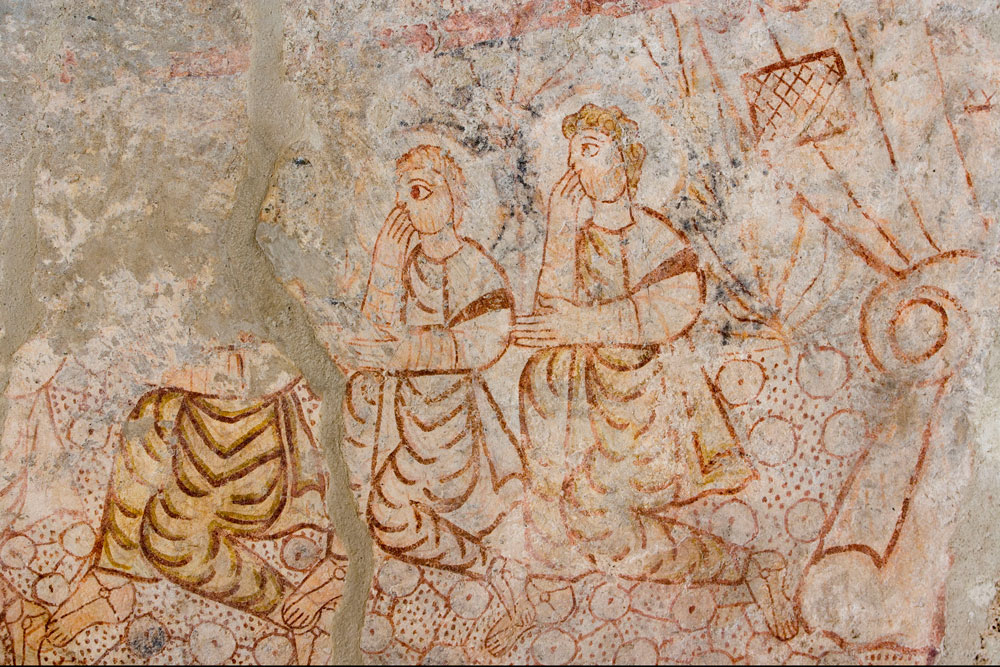

The mural altarpiece of St Peter was discovered in 1895 as a result of the major restoration campaign conducted at the Church of St. Peter. It is one of the most outstanding works still to be found anywhere in the world, above all because of its conceptual design as altarpiece standing free of the apse wall, and entirely unusual approach in the mediaeval period.
The altarpiece covers the entire central lobe of the apse, featuring a mural painting with two registers divided by a wooden beam.
The lower part is rectangular, and contains a representation of the Crossing of the Red Sea. The semicircular upper part features a decoration with angels and cherubs in the foreground, and five niches containing St. Peter, St. Paul and the Tetramorph, the symbols of the 4 evangelists.
